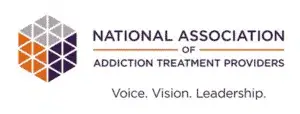Alcohol abuse and addiction can severely impact your health and overall well-being in many different ways. Addiction can affect your ability to live a normal life, interact socially or perform well at work or school. It can also increase your risk of cancer, pancreatitis, dementia, liver disease and heart disease.
Alcohol abuse can also lead to alcoholic myopathy, a condition that affects the muscles in several different ways. Even if alcohol myopathy does not develop, alcohol can still negatively impact muscle structure and strength.
How Does Alcohol Affect Muscles?
Using alcohol for prolonged periods of time can lead to muscle weakness or pain. The effects of alcohol on muscles are particularly prominent after an episode of binge drinking, but they can resolve quickly when alcohol use is stopped. Some of the ways that alcohol impacts the muscles include:
Alcohol Dehydrates You
When you consume alcohol, your body loses more fluid than it gains from drinking. This leads to dehydration whenever you drink. Hydration is very important for muscle health, as it allows muscles to operate smoothly and recover quickly. Dehydration can impair your muscles as well as make them sorer. It can also make it more difficult to work out, preventing you from staying in good physical shape.
This Season, Give Yourself the Gift of a Fresh Start.
Whether you are struggling with addiction, mental health or both, our expert team is here to guide you every step of the way. Don’t wait— reach out today to take the first step toward taking control of your life.
Alcohol Creates Inflammation
Alcohol is recognized by the body as a foreign, toxic substance. The body naturally responds to alcohol’s presence by creating inflammation that can lead to organ damage. Heavy alcohol use will lead to chronic inflammation that affects the muscles. This causes pain and soreness that can discourage you from keeping active, leading to further deterioration of muscle condition.
Alcohol Slows Muscle Growth and Recovery
Alcohol has a significant effect on how the body breaks down and builds up muscle. Ultimately, this leads to an imbalance that inhibits muscle growth and makes it more difficult for muscles to recover. Impaired muscle recovery is an important consideration for those who work out, as exercise strengthens the muscles by causing microscopic damage that heals back stronger. Impaired healing will make it take longer to recover after working out and make exercise less effective.
Alcohol Causes Body Aches
Alcohol can lead to muscle soreness and body aches. Chronic alcohol use can lead to changes in metabolism that cause a buildup of a chemical called lactic acid. This chemical also builds up naturally in the muscles during exercise and is what causes soreness when working out. When alcohol use causes lactic acid to build up, it can lead to muscle soreness that feels similar to working out; however, no physical exertion has actually occurred.
What Is Alcoholic Myopathy?
Alcoholic myopathy is a disease that causes increased muscle weakness and changes muscle structure, making muscles smaller and less able to function. About half of all alcoholics will develop some form of myopathy as a result of their drinking habits. Alcoholic myopathy can also affect primarily just the heart muscle, which is known as cardiomyopathy.
While alcoholic myopathies are quite common for those who use alcohol heavily, they normally resolve by themselves when alcohol use is stopped. There are also ways to treat myopathy in those who develop it.
Acute Alcoholic Myopathy
Acute alcoholic myopathy is myopathy caused by an episode of alcohol use over a short period of time. Acute alcoholic myopathy can still occur in those who use alcohol chronically, but it will be related to an episode of their drinking — not to their long-term alcohol use. This acute form of alcoholic myopathy is most commonly experienced after an episode of binge drinking. After the episode is over and alcohol use is stopped, the condition will normally resolve by itself within a few days or a couple of weeks.
Chronic Alcoholic Myopathy
Chronic alcoholic myopathy is related to the long-term use of alcohol and is not connected to just a single episode of alcohol use. This form of alcoholic myopathy is typically only experienced by heavy alcohol users who drink frequently. Chronic alcoholic myopathy may develop more slowly than acute alcoholic myopathy, but it will take longer to resolve once alcohol use is stopped. Chronic alcoholic myopathy may persist for several weeks once alcohol use is stopped. In some cases, it can take up to 12 months to resolve.
Alcoholic Myopathy Symptoms
Alcoholic myopathy requires assessment from a doctor to diagnose, but it is usually recognizable due to the symptoms it produces. The main symptoms of alcoholic myopathy are related to atrophy and weakness of the muscles. However, there are also less obvious symptoms it may cause. These can include:
- Numbness or pain in your arms and legs
- Experiencing a “pins and needles” feeling
- Weakness, cramps, aches, contractions or spasms in the muscles
- Having trouble tolerating heat
- Difficulty urinating (having trouble starting, feeling as if your bladder isn’t completely empty, incontinence, etc.)
- Constipation and/or diarrhea
- Trouble swallowing
- Nausea and/or vomiting
- Men may also develop impotence
Symptoms tend to affect both sides of the body equally and are more prevalent in the legs. They usually appear gradually and get worse over time, but symptoms can also occur suddenly after heavy binge drinking.
Alcohol Myopathy and the Heart
Alcohol abuse can also lead to damage to the heart. People who struggle with alcoholism are prone to weakened hearts, or cardiomyopathy. When cardiomyopathy occurs, the heart muscle experiences changes that make it unable to function correctly. This makes it difficult for the heart to pump blood throughout the body. If left unchecked, it can lead to impaired circulation that causes heart failure.
You might be suffering from cardiomyopathy if you experience:
- Difficulty breathing
- Unusual fatigue
- Swelling in the legs and feet
- Arrhythmia (irregular heartbeat)
Seek treatment immediately if you experience any of the symptoms of alcoholic myopathy or cardiomyopathy.
How Does Alcoholism Cause Myopathy?
Both alcohol and acetaldehyde — the byproduct created when the liver breaks down alcohol — work against your body’s ability to make new muscle proteins. This can result in up to 30% of lost muscle mass.
Many people with alcoholic myopathy also tend to lack normal levels of vitamin E. Alcohol attacks carotenoids (vitamin E producers) in the liver, resulting in this deficiency. Damaged muscle cells recover better when they’re exposed to vitamin E, so lowering vitamin E levels provides less muscle protection.
Alcoholism and poor nutrition often go hand in hand. In the case of those who drink heavily, alcohol often replaces food in the diet. Alcohol also decreases the body’s ability to absorb the nutrients it needs from food, further affecting muscle health.
Does Alcoholic Myopathy Go Away?
Alcoholic myopathy often goes away on its own once alcohol use is stopped. For those with acute alcoholic myopathy, this can occur within a few days, and symptoms are very unlikely to last more than two weeks. In cases of chronic alcoholic myopathy, however, symptoms can last two to 12 months. Medical treatment is not always necessary for chronic alcoholic myopathy to resolve, but it can help the symptoms to improve more quickly.
How Can Alcoholic Myopathy Be Treated?
Treating alcoholic myopathy and preventing further damage starts by stopping the use of alcohol. The initial alcohol detoxification period takes about one to two weeks, and it can be done in an inpatient or outpatient setting. Because alcohol is what causes alcoholic myopathy, attaining sobriety is the first and most important step toward improving it.
Other important approaches to consider include:
- Ensure you’re eating a balanced diet that includes foods rich in vitamin E (sunflower seeds, almonds, cooked spinach, canned pumpkin) and vitamin B (beans, poultry, fish, soy, etc.).
- Consult your doctor about supplementing your diet with magnesium, calcium and carnitine to improve muscle health.
- Consider physical therapy or regular exercise to help with muscle recovery.
While alcoholic myopathy is a prevalent side effect of alcoholism that can affect your quality of life, it’s important to remember that the symptoms are recognizable and the condition itself is treatable.
Find the Help You or Your Loved One Needs
If you or someone you love is struggling with alcohol use despite health problems like alcoholic myopathy, The Recovery Village at Palmer Lake can help. If you’re concerned that you or a loved one may be showing symptoms of alcohol addiction, you can learn more about the warning signs by taking one of our free alcohol self-assessments:
The Recovery Village at Palmer Lake is dedicated to helping Colorado residents find lasting recovery from alcohol abuse and addiction. Contact one of our helpful representatives today to learn how alcohol rehab can benefit you or your loved one.









